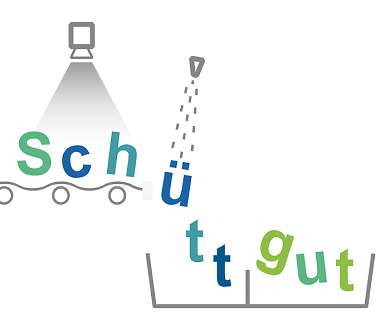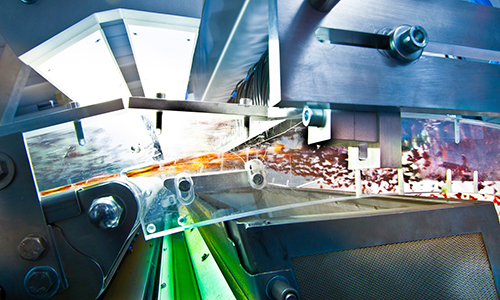Motivation: Improvement of optical bulk material sorting by simulation-supported development of tracking systems
In this joint research project, optical bulk material sorters will be developed for use under dynamic conditions and options for targeted material recirculation to improve sorting results will be identified. The project builds on the research results of the IGF project 18798N.
Result: Develop simulation-based tracking methods for use in a dynamic environment.
With funding from the German Federal Ministry for Economic Affairs and Energy, a follow-up research project on improving bulk material sorting with new technical approaches is being carried out at the universities of TU Berlin (Department of Mechanical Process Engineering and Processing, MVTA) and Karlsruhe Institute of Technology (Institute of Anthropomatics and Robotics, Chair of Intelligent Sensor-Actuator Systems, ISAS), as well as the Fraunhofer Institute of Optronics System Technologies and Image Selection IOSB until 2021 by the Forschungs-Gesellschaft Verfahrens-Technik e.V.
In this follow-up project, a change of perspective from the consideration of optical sorting systems under stationary operating conditions to a consideration of optical sorters in dynamic use will be carried out, as is also of great relevance in practice. Dynamic operation means that optical bulk material sorters are subjected to variable or fluctuating material flows in terms of material mixture, mass flow and particle size distribution. This will be investigated using construction and demolition waste as an example. In the course of dynamic operation, the continuous targeted recirculation of dispersed material from the accept or reject fraction will also be considered, as is already common practice in many other processes in mechanical process engineering - especially those for separation - to improve process quality. Furthermore, area-scan cameras are used so that the motion path of particles can be tracked.
Method and application (IGF project 18798N)
With funding from the German Federal Ministry for Economic Affairs and Energy, a research project to improve bulk material sorting using new technical approaches is being carried out at the Universities of Bochum (Chair of Energy Systems and Energy Process Technology, LEAT) and Karlsruhe Institute of Technology (Institute of Anthropomatics and Robotics, Chair of Intelligent Sensor-Actuator Systems, ISAS), and at the Fraunhofer Institute of Optronics, System Technologies and Image Exploitation IOSB until February 2018 by the Forschungs-Gesellschaft Verfahrens-Technik e.V.
Optical sorting of bulk materials is carried out via the steps of separation, optical feature detection and sorting into an accept and reject fraction by means of pneumatically controlled pressure pulses. Since the design of such systems has so far been strongly empirical, systematic investigations will be carried out for the first time within the scope of this project, which will provide a fundamental understanding of the bulk material movement in optical sorters. Experimental investigations and numerical simulations are used as tools for this purpose. For precise control of the pneumatic valves, a predictive tracking method is developed for tracking the position of the particles, which increases the separation accuracy of the sorting. Results of numerical and experimental investigations are integrated into the tracking algorithms in the form of motion models. The tracking allows the identification of uncertain model parameters and thus the learning of the bulk material motion behavior.
From the evaluation and characterization of the bulk material motion behavior, methods for determining optimal conveying parameters are derived, which lead to optimized operating parameter sets for optical bulk material sorting. In addition to model parameters, shape properties and extent of the bulk material objects are also determined by means of the tracking methods, so that a model-based classification is possible. In this way, a separation of the bulk material can also be carried out in optical sorters on the basis of secondary, derived features, such as the motion behavior of the individual particles. By numerically mapping the subcomponents of an optical sorter, including particle detection and tracking, an overall model for the design and optimization of optical bulk material sorting systems will be available for the first time at the end of the project. At the end of the project, the results and methods obtained from selected examples of construction and demolition waste will be directly available to other areas of application of optical bulk sorting, in particular SMEs, where they will contribute to economic success.
 Fraunhofer Institute of Optronics, System Technologies and Image Exploitation IOSB
Fraunhofer Institute of Optronics, System Technologies and Image Exploitation IOSB 
